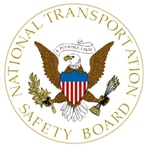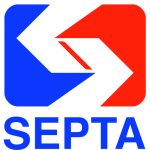The Times-Herald RecordOnline reported that on October 21, 2016, a joint state and federal legislative commission will begin hearings with New Jersey Transit (NJT) administrators in the wake of the September 29 Hoboken, NJ transit crash that injured more than one hundred and killed Fabiola Bittar de Kroon, a young mother and lawyer who had recently moved to New Jersey with her husband and one-year-old daughter. Read the complete article here.
Tag: PTC
Investigators from the National Transportation Safety Board (NTSB) began the task of gathering evidence to determine the cause of yesterday morning’s deadly New Jersey Transit crash that injured 114 and killed a woman who was standing on the platform at the busy hub in Hoboken, New Jersey. According to a CNN report, NTSB officials have retrieved the train’s event recorder and will soon interview engineer Thomas Gallagher, who was treated and released from the hospital yesterday. The sharp increase in railway accidents underscores the need to hasten implementation of Positive Train Control (PTC) systems and mandated two-person crews on all trains. Read the latest article from CNN, here.
Photo courtesy of CNN.com.
?
Several items on the list demonstrate the importance of technology in saving lives, preventing accidents and lessening the number and severity of injuries from accidents. For example, the list calls for promoting both the availability of collision avoidance technology in highway vehicles, and the completion of rail safety initiatives to prevent accidents. The list also calls for strengthening occupant protection in all modes of transportation, including laws mandating primary enforcement of seatbelt use, and age-appropriate child restraints.
Twenty years ago, the NTSB issued its first recommendation on the use of technology to prevent rear-end collisions. Implementation of this technology could significantly reduce motor vehicle crashes – by far the leading cause of death and injuries in transportation. Although federal regulators have made progress toward including such technologies in the 5-star safety rating on new vehicles, the NTSB advocates including such new technologies as standard equipment on all new highway vehicles – including commercial vehicles — just as airbags and seatbelts are now standard equipment.
The NTSB also called for completion of rail safety initiatives, including the implementation of positive train control (PTC). A 2008 law mandated implementation of positive train control by the end of 2015. Congress changed the law and implementation deadline late last year to avoid a possible rail transportation shut-down.
NTSB Chairman Christopher Hart cited the PTC implementation as an example of why a sense of urgency is needed in implementing Most Wanted List improvements. “Every PTC-preventable accident, death, and injury on tracks and trains affected by the law will be a direct result of the missed 2015 deadline and the delayed implementation of this life-saving technology,” Hart said.
The NTSB’s push to improve rail transit safety oversight was in part a result of the agency’s investigation of a deadly smoke event last January near Washington’s L’Enfant Plaza Metro station. The accident exposed many safety issues, some of which resulted from shortcomings in the safety oversight of WMATA. This year, the NTSB will continue to examine the way that the Federal Transit Administration is implementing such oversight – not only in Washington, but nationwide.
Improving rail tank car safety by phasing out the use of DOT-111 rail tank cars to transport flammable liquids such as crude oil and ethanol is another improvement addressed in the 2016 Most Wanted List. The deadline for implementing such tank rules is 2025. Until these tank cars are removed from service, people, their towns, and the environment surrounding the rail system remain at risk.
Distraction (especially from portable electronic devices) and fatigue continue to be serious safety issues in all modes of transportation, and the NTSB’s 2016 Most Wanted List addresses them all. The list also notes that undiagnosed and untreated medical conditions have caused or contributed to accidents and calls for operators and regulators to require medical fitness for duty.
Impairment is also an issue in all modes of transportation. The NTSB has recommended lowering the legal limit on blood alcohol content to .05 to reduce deaths and injuries on highways. However, drugs other than alcohol can also impair drivers and operators of other types of vehicles – whether these drugs are recreational, over-the-counter, or prescription.
Another improvement on the 2016 list is preventing inadvertent spins and stalls within the general aviation community – the worst safety problem facing general aviation. While airlines have become very safe, safety progress has slowed in the less widely understood world of general aviation.
All of these most wanted transportation safety improvements are the result of our accident investigations. Our most powerful tool to learn safety lessons from accidents is data recorders. Thus, the list calls for their increased use in all modes of transportation.

Since the Federal Railroad Administration (FRA) mandated in 2008 that all railroads operating in the U.S.install PTC by Dec. 31, 2015, Amtrak, SEPTA and a few other railroads have been working to install the system by the original deadline. However, Amtrak and SEPTA are in the minority. Most railroads have delayed the installation of this long-overdue safety technology.

PTC technology is designed to stop or slow-down a speeding train and is expected to bring an element of safety to the railroads previously unheard of. It is speculated that if the technology had been operational during the Amtrak crash near Philadelphia earlier this year, then the derailment possibly would not have happened.
Despite this accident and others, the railroads have drug their feet in having the technology installed, claiming they have not had enough time to install the system, make it operational and that the cost of the technology is too high. The Northeast Corridor is now one of the few areas where PTC is operational in the United States.
Read more from Philly.com.

On December 3, 2015, Congress passed H.R. 22, the Fixing America’s Surface Transportation Act (FAST ACT) by overwhelming bipartisan votes of 83 to 16 and 359 to 65 in the Senate and House respectively. The legislation is the first long-term surface transportation reauthorization in a decade and provides funding and policy changes for our nation’s highways, mass transit and rail systems. This landmark legislation includes a number of SMART TD policy priorities, many of which are outlined below.
“I’m very pleased with the legislation overall compared to some of the original proposals. The legislation was modified in both houses and in the conference committee to correct many of the harmful issues facing our membership,” SMART TD President John Previsich said.
“Our National Legislative Director John Risch and his team, working with other unions and allies did a stellar job on a very complex 1300-page piece of legislation that was passed through a very complicated legislative process.

“In difficult economic and political times, an effective legislative department makes all the difference and we have one of the best in the business.”
“Considering the makeup of the Congress, overall we are pleased with the policy provisions in this legislation, and that the law covers five years of authorization,” said Risch. “However, we are disappointed that much of the funding came from non-user fees. Freight railroads alone fund their own track and infrastructure. Using general funding for highways puts railroads at a competitive disadvantage because trucks are not paying their fair share of costs for highway construction and maintenance.”
Provisions to protect transit members from assault
- Section 3022. Improved Public Transportation Safety Measures
- This much-needed section will better protect our transit members by requiring the Federal Transit Administration to promulgate regulations to protect public transportation operators from assault.
- The rulemaking will be required to consider the safety needs of drivers in different modes, including bus and light rail.
- This provision was a direct result of a joint lobbying effort by SMART TD, the AFL-CIO’s Transportation Trades Department (TTD), AFL-CIO, the Transport Workers Union (TWU) and the Amalgamated Transit Union (ATU).
ECP brake mandate is maintained
- The legislation largely protects the May 2015 Pipeline and Hazardous Materials Safety Administration (PHMSA) rule that requires the use of electronically controlled pneumatic (ECP) brakes on certain high-hazard flammable trains (HHFTs), which SMART TD strongly supports.
- While the legislation does require another study on ECP brakes, it also includes language supported by SMART TD that will ensure testing is done independently and objectively, and not by the railroads or other entities affected by the rule.
- Additionally, the legislation neither prohibits DOT from moving forward with the May 2015 rule while the study is in progress, nor does it require DOT to issue a new rule dependent on the study’s findings.
- The original Senate Commerce Committee language would have repealed the ECP rule and replaced it with a railroad-dominated study.
Inward-facing cameras cannot be used to retaliate against employees.
- Working with Senator Richard Blumenthal (D – Conn.), SMART TD secured a provision stating that any in-cab audio or image recording obtained by a railroad carrier under this section may not be used to retaliate against an employee. Rail Subcommittee Chairman Jeff Denham (R – Calif.) reinforced this provision by specifically mentioning it in a House floor speech.
- We are pleased the final bill removed a requirement for efficiency testing.
Removed harmful privatization language for transit projects
- Working with TTD and other transit unions (TWU and ATU), SMART TD helped strip a harmful privatization provision from the legislation. The provision would have been an unprecedented giveaway to the private sector by allowing certain public-private partnerships to move to the front of the line for grant awards simply because the project included private money, with no minimum threshold.
- This provision – if not changed – could have resulted in lost jobs, lower wages and diminished passenger rail and transit service.
Biased hair testing methods rejected
- SMART TD has strongly opposed the unfair and biased use of hair testing for drug tests.
- SMART TD strongly opposed previous versions of this legislation that would have allowed companies to immediately begin testing an employee’s hair for drugs.
- The final legislation would only allow companies to do so after experts at the Department of Health and Human Services have set guidelines for such testing.
Tank car safety standards
- The legislation makes substantial improvements in tank car standards by requiring that all new tank cars are equipped with one-half inch thermal blankets.
- All existing DOT-111 tank cars transporting flammable liquids are required to be upgraded to retrofit standards regardless of product shipped.
Alerters
- The legislation requires DOT to promulgate a rule requiring working alerters in the controlling locomotive of each commuter and intercity passenger train.
Signal Protection
- The legislation requires DOT to initiate a rulemaking for redundant signal protection for Maintenance of Way (MOW) workers.
PTC Grants
- The legislation provides $199 million to finance a competitive grant program for PTC implementation on commuter railroads.
Funding: Amtrak and Transit
- Transit programs will receive a 9 percent funding increase in Fiscal year 2016 over FY 2015 levels and 2 percent increases each year through 2020.
- Amtrak is funded through the appropriations process; however, this legislation increases authorized FY 2016 funding levels for Amtrak by $60 million.

The nation’s rail safety chief told a group of railroad officials she expects them to complete a long-delayed collision-avoidance system by the end of 2018 and to not count on Congress to give them an additional reprieve.
Recent legislation approved by Congress and signed by President Barack Obama gives them a three-year extension to complete positive train control, though with some wiggle room to seek an additional two years if necessary.

The Federal Railroad Administration (FRA) will soon unveil its expectations for railroads to meet the newly extended Dec. 31, 2018, deadline for positive train control (PTC) implementation, FRA Administrator Sarah Feinberg told members of the Railroad Safety Advisory Committee (RSAC) last week.
Feinberg urged railroads not to make the extension their primary focus, but to focus on “getting PTC up and running as soon as possible,” according to a prepared statement of remarks.
“Over the last year, I am sure you have observed that FRA is in a much more aggressive posture on PTC, and everyone should expect for that posture to continue,” Feinberg told the committee, which advises the railroad industry on safety policy.
Read more from Progressive Railroading.
WASHINGTON — In 1981, while traveling on a corporate jet, Richard M. Bressler, the chairman of the Burlington Northern Railroad, hit on an idea: What if the technology used by airlines to track the location of planes and help prevent accidents was applied to the rail industry?
Mr. Bressler, an engineer by training and a former airline executive, directed a small group of his employees to come up with a similar system for the railroads.
The result was a safety system called the Advanced Railroad Electronics System, or ARES, which was soon placed on several trains on a section of track in Minnesota. The system, among other safety features, allowed dispatchers to stop trains automatically if the engineer exceeded speed limits.
Read more from the New York Times.

The U.S. Senate yesterday passed a short-term surface transportation funding extension that includes a long-term extension of the positive train control (PTC) implementation deadline. The Senate’s action followed the House’s approval of the bill on Tuesday, and President Obama is expected to sign it.
The legislation reauthorizes funding of transportation programs through Nov. 20, and pushes back the Dec. 31 deadline for railroads to install PTC safety technology to Dec. 31, 2018, and as late as 2020 under certain circumstances.
The deadline extension will ward off a nationwide shutdown of railroad services, which industry leaders said would occur after Jan. 1, 2016, if the deadline wasn’t postponed. Most railroads would have missed the Dec. 31 deadline, and many indicated they wouldn’t operate in violation of federal law.
Read more from Progressive Railroading about PTC extension and Sarah Feinberg’s confirmation as administrator to the FRA.

According to a report from the Federal Railroad Administration (FRA) required by Congress, safety advocates started calling for the nation-wide implementation seven years ago.
“Positive Train Control is the most significant advancement in rail safety technology in more than a century,” U.S. Transportation Secretary Anthony Foxx said in the report. “Simply put: it prevents accidents and saves lives, which is exactly what we seek to do at The Department of Transportation every single day. We will continue to do everything in our power to help railroads install this technology.”
Read more from NJ.com.